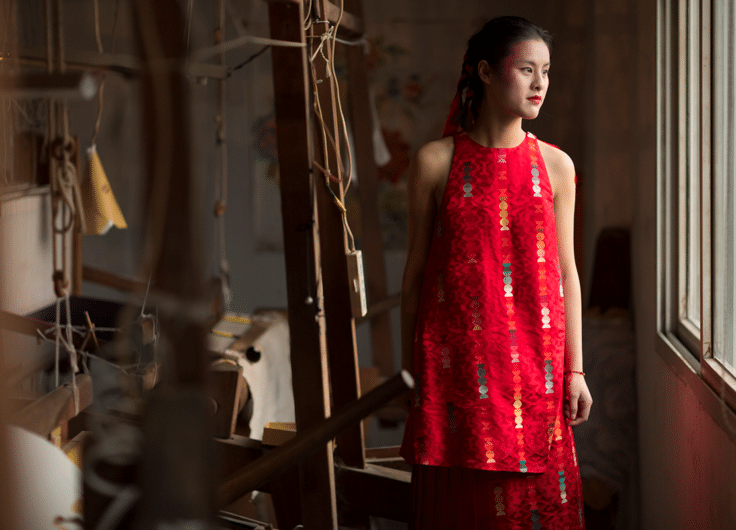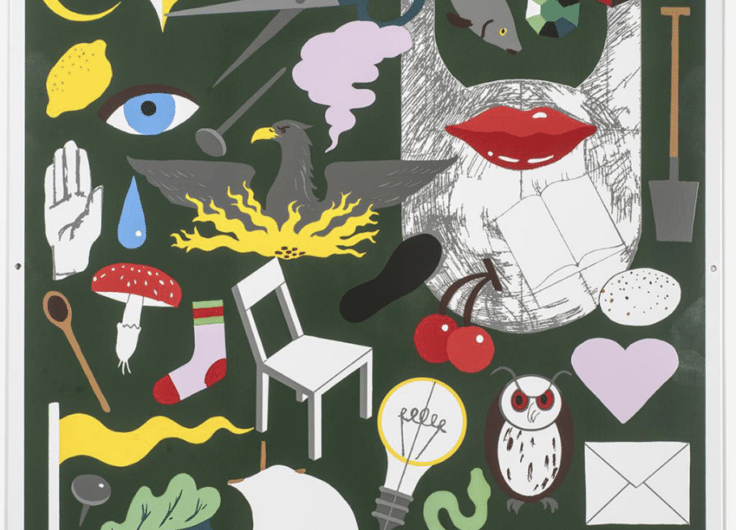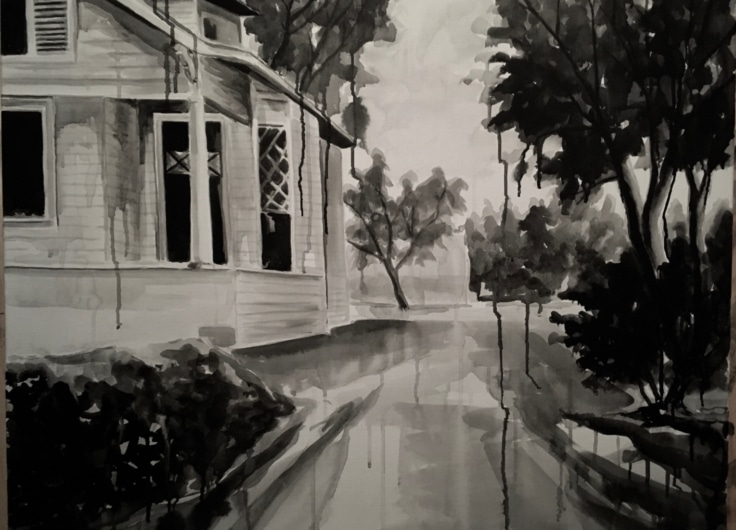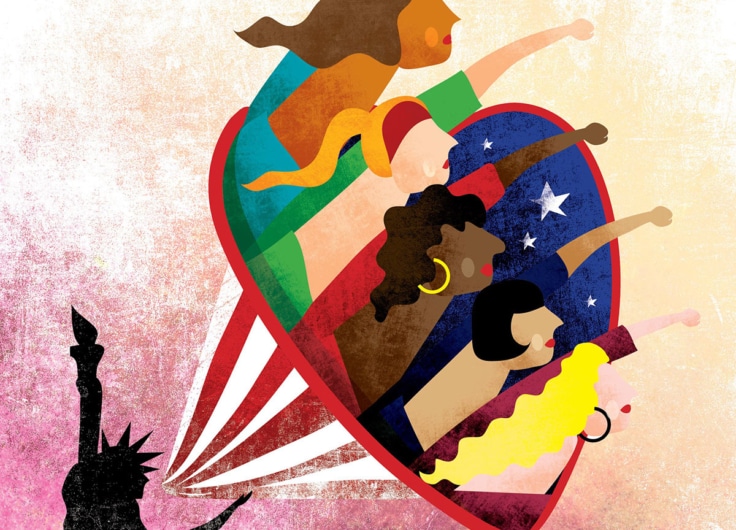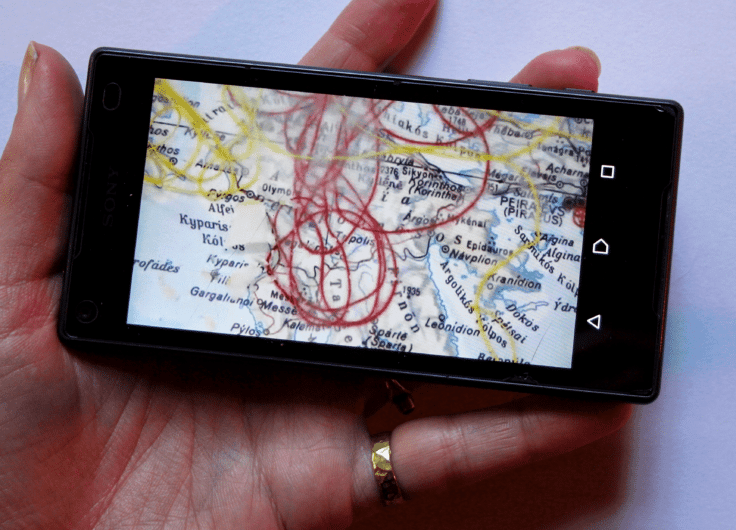Wouter Paijmans’ Artistic Flair Can Be Found in Little Slip-Ups
Wouter Paijmans (b. 1991, Loon op Zand) had always been passionate about painting, but gradually switched to other media. However, even when he works with aluminium or other textiles, a painterly approach can still be seen. This, among other things, lead to a hybrid art form, which he refers to as ‘confection paintings’.
One of the first exhibitions I discussed was a somewhat best of the graduation exhibitions of 2015, with the most promising graduates from the Dutch art academies of that year. Among the most striking and convincing contributions, there were two large metal objects by Wouter Paijmans, who had just graduated from the Gerrit Rietveld Academy in Amsterdam. They seemed to be processed readymades, once industrially produced, but there was something off with them, although I didn’t know what exactly. One of the objects was a twisted-looking scaffolding called Aluminium Scaffolding. It seemed as if an attempt had been made to press together a found object with great force. After that it was no longer an object of use, but a work of art.
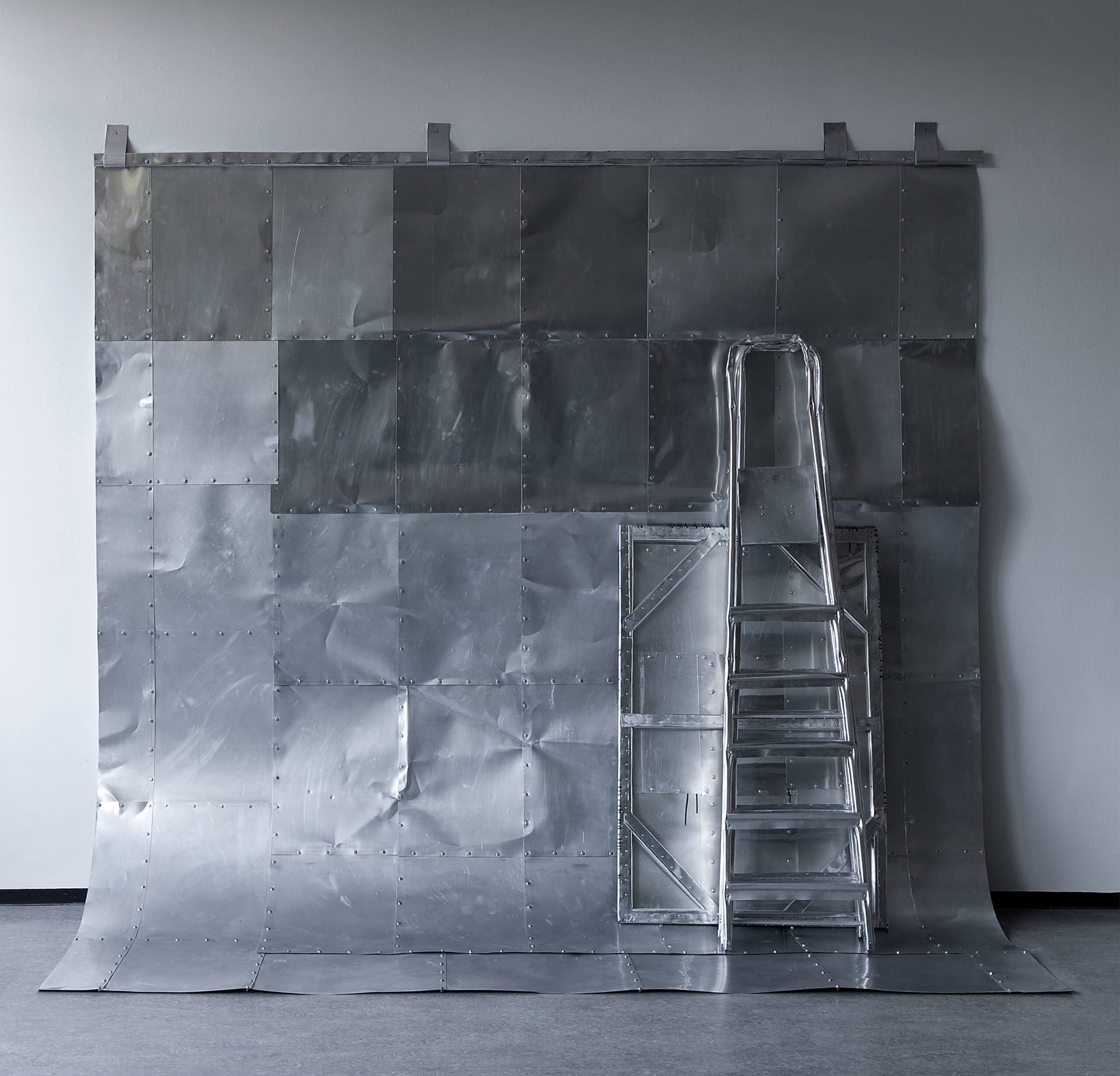 Graduation project Wouter Paijmans, Gerrit Rietveld Academy, 2015
Graduation project Wouter Paijmans, Gerrit Rietveld Academy, 2015© Gert Jan van Rooij
About four years later, Paijmans would tell me that the objects were really not readymades. He had built them himself, by folding aluminium over slats. If you had taken a closer look, you would have seen that they weren’t completely put well together or that they had the fingerprints of the creator on them. Moreover, aluminium is not strong enough for scaffolding at all.
From aluminium to textiles
Paijmans took a detour before ending up at the Gerrit Rietveld Academy. After he spent some time at the agricultural school, he enrolled in a course in design and communication, where he also received drawing and painting lessons. In addition, he turned out to have a pretty good feel for building models. Once he entered the art academy, Paijmans had to become acquainted with all media. Although he initially saw himself as a painter, he noticed he was also good at making sculptures. He searched for ways to expand painting, for example with a spatial component. This interest, and simply wanting to work with his hands, led, among other things, to the aluminium objects which became his graduation project. Sometimes he would paint their surfaces.
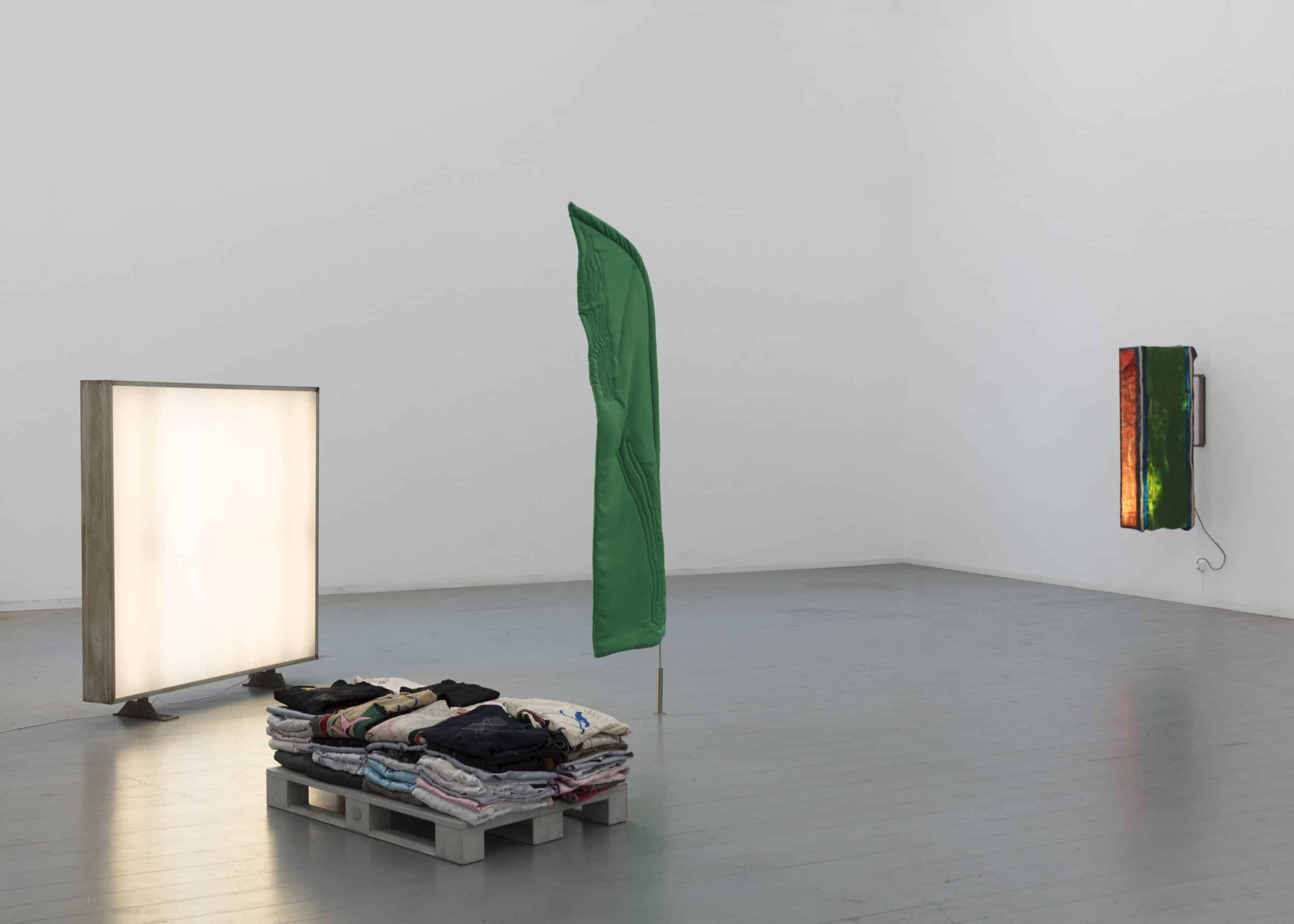 Studio, De Ateliers, 2017
Studio, De Ateliers, 2017© Lonneke Van der Palen
In 2016, Paijmans was admitted to the renowned postgraduate art school De Ateliers, for a work and coaching period of two years. Aluminium did not fascinate him anymore, and he began to discover other media. The main one was (and still is) textile. He bought a cheap sewing machine and started making sweaters, simply because he thought it was too intense to paint every day and he still wanted to keep himself busy. A remarkable resemblance with the aluminium objects is that you can’t actually wear the sweaters. Initially this was because Paijmans had yet to learn how to work the machine and the material, yet now he has to consciously sabotage the sweaters. In his own words, he is not a superstar with the sewing machine, but neither does he want to be. When that happens, he goes in search of new media and materials; after all, he wants to continuously surprise himself. When you have mastered the technique down to the very last detail, you minimize the coincidences, and according to Paijmans, these are precisely the gifts of the creative process.
Multimedia painting
In the past four years, Paijmans has also stood out among the juries of renowned incentive awards. In 2018, he was one of the winners of the Buning Bongers Prize, which is intended to stimulate young artists. In the same year, he was also nominated for the Royal Award for Modern Painting, a Dutch state prize that was once established to stimulate young painters. In the meantime, the scope of the prize has broadened considerably: among the winners and nominees are also people who (partly) work with other media – such as drawings, installations or collages – but in a way that you can still call painterly. The nomination of Paijmans is also appropriate, because his art retains something picturesque, even without a brush and paint. He makes a composition, for example, by placing a stepladder against a patchwork of metal plates, or with the help of a number of piles of colourful sweaters.
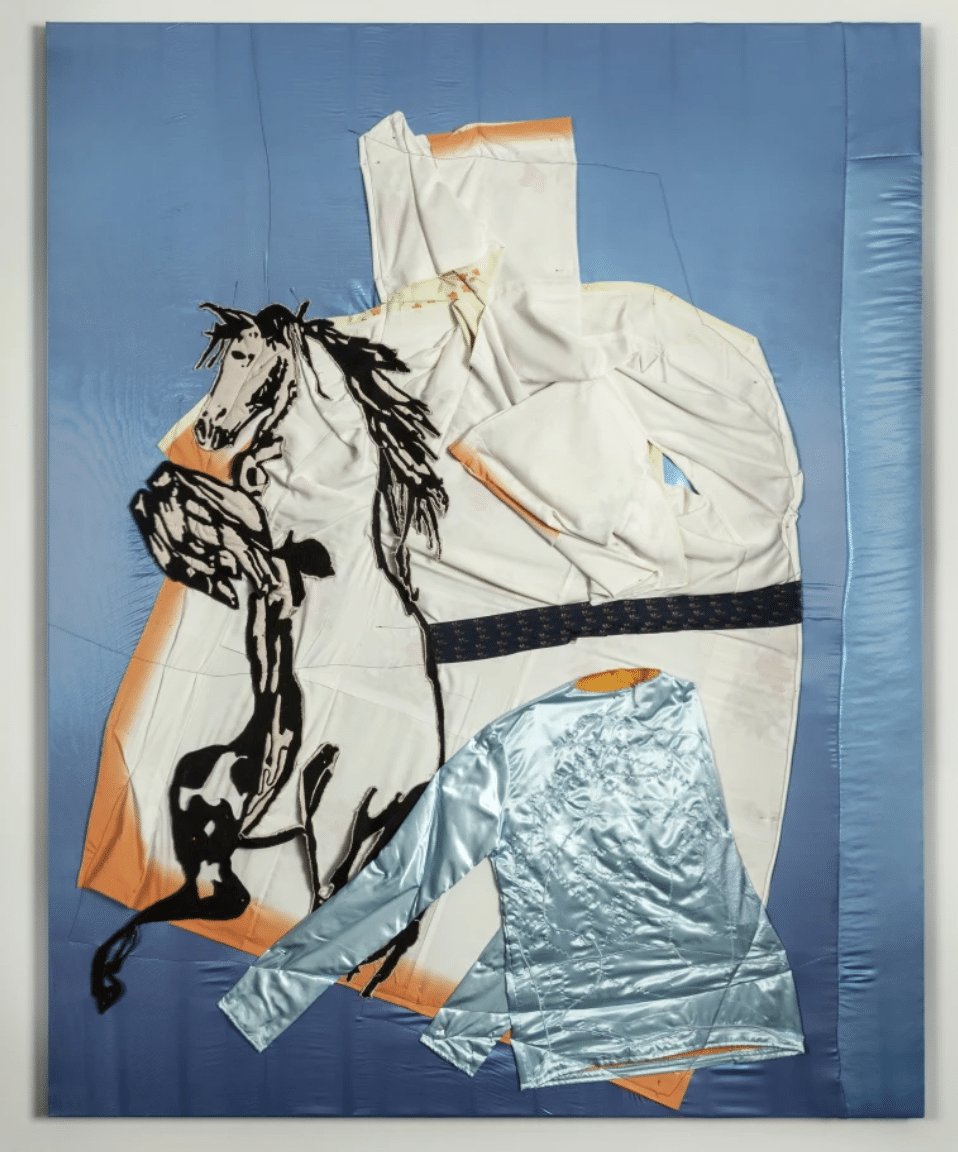 Horse on Kimono, Annet Gelink Gallery, 2018/2019
Horse on Kimono, Annet Gelink Gallery, 2018/2019© Wouter Paijmans
Earlier in 2019, Paijmans exhibited several works of art in which he combined previously made aluminium objects with recently made garments. In hindsight, he calls these works a way of showing his new art with his earlier art. What is particularly striking is the resilience and stubbornness of the textile. The contrast between the hard and cold looking aluminium is big. The coats that hang over a large refrigerator or a somewhat abstract, razor-like coat rack, for example, seem less robust. However, on closer inspection, it is noticeable that they were perhaps even more difficult to manipulate than the aluminium. Unless you resort to iron wire, textiles will naturally drape.
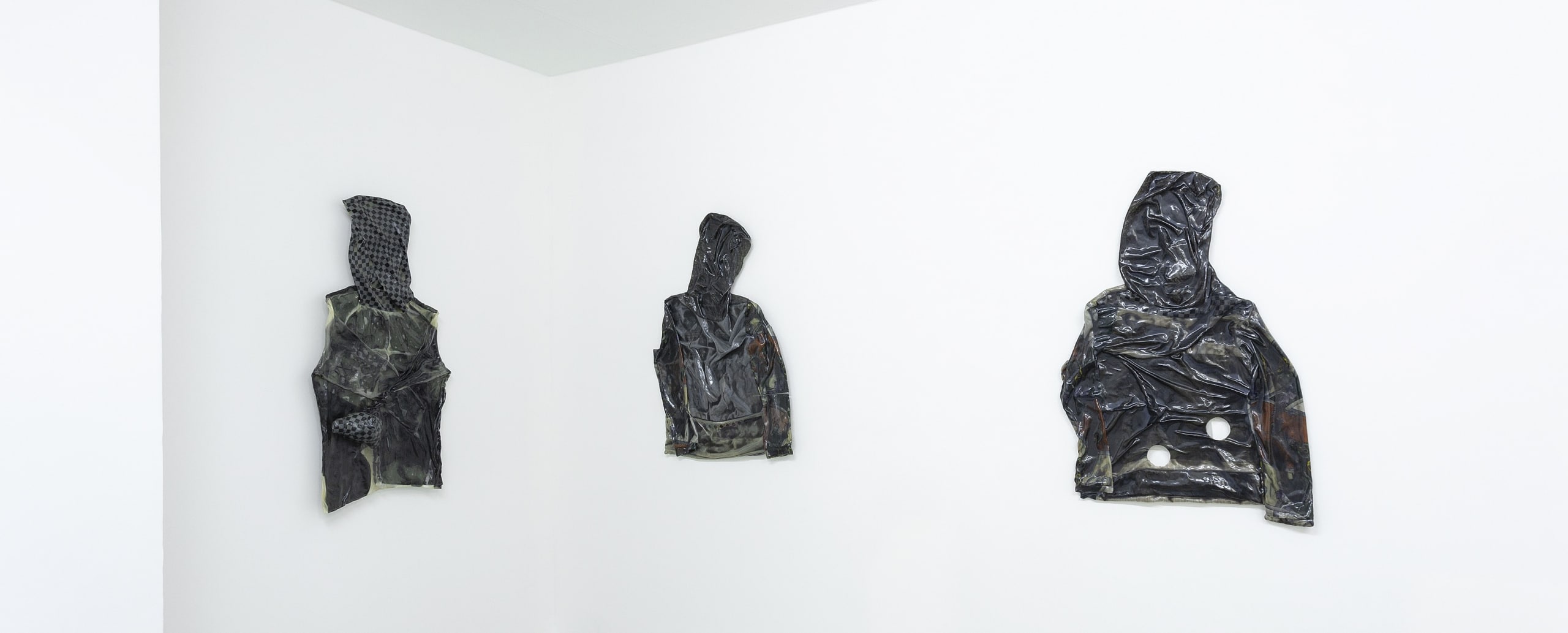 Confection Painting continued: Hoody, Annet Gelink Gallery, 2019
Confection Painting continued: Hoody, Annet Gelink Gallery, 2019© Wouter Paijmans
Confection paintings
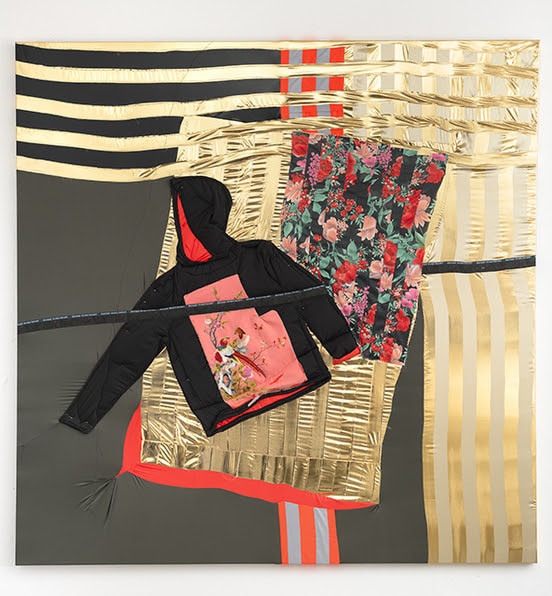 Stars and Stripes 2018, KRC Collection
Stars and Stripes 2018, KRC Collection© Peter Cox
This obstinacy is also evident in Paijmans’ series of textile works that is on display until 24 November in Museum de Pont in Tilburg, under the title Stripes & Stars (Confection Painting). The term ‘confection paintings’ was once used during a conversion with a friend and has been around ever since. It will not only be his first museum solo exhibition, but also the first time he has been given a room at his disposal: the museum’s project space (de Podiumzaal). He is going to exhibit roughly eighteen large-scale, mostly white, textile works that look like paintings. They are based on one of his earlier works, Star & Stripes from 2018. Repeatedly, you see a hoodie against the background of an American flag. This is one of the reasons why they are reminiscent of pop art. Paijmans hardly feels this sense of relatedness, although he is very fond of Andy Warhol. However, he doesn’t like the (art-historical) tendency to use old art to inspire new art. According to him, it gets in the way of observing and that is what it is all about: good, attentive and sharp observation.
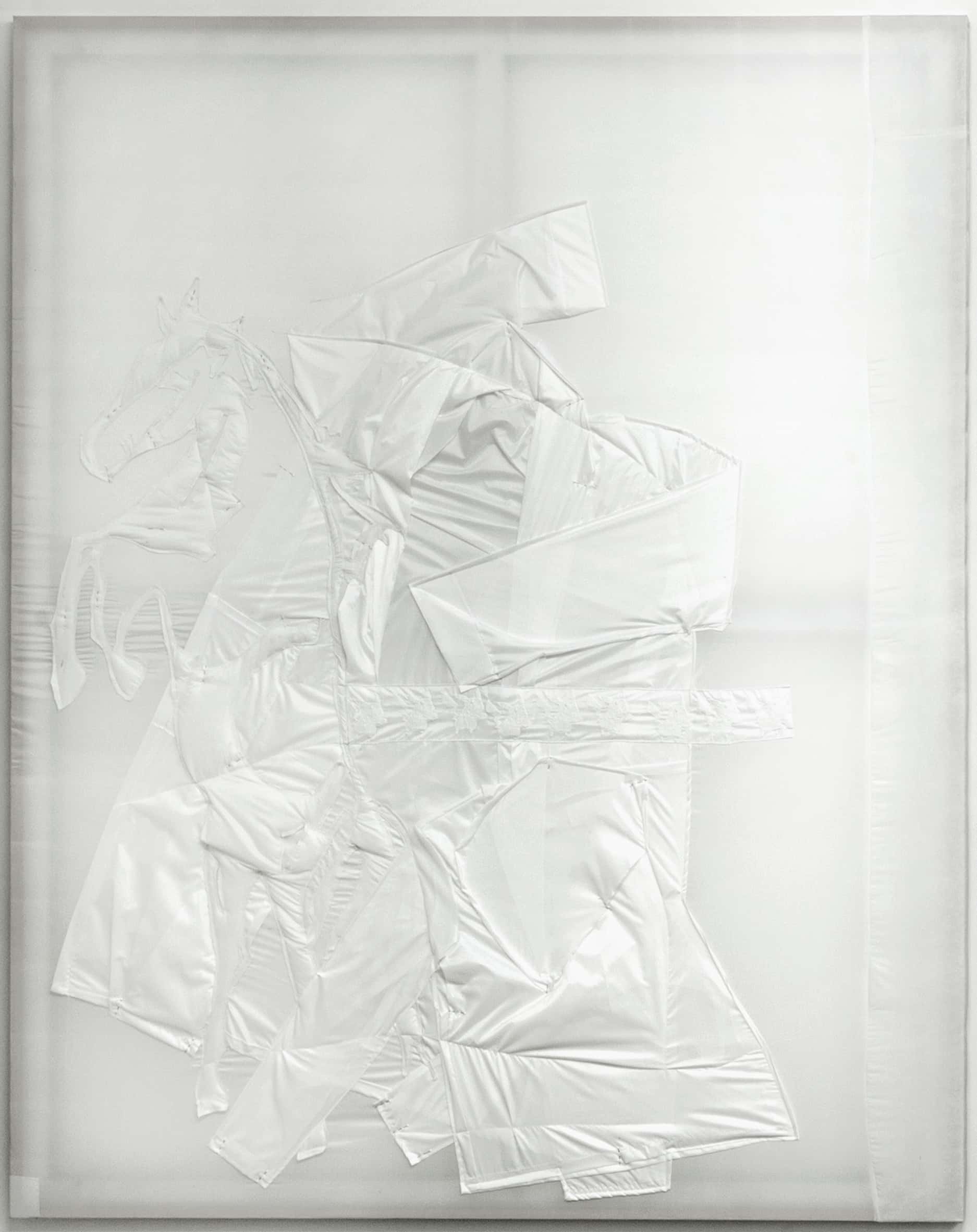 Confection Painting, exhibition view Annet Gelink Gallery, 2019
Confection Painting, exhibition view Annet Gelink Gallery, 2019© Michiel Claus
Neither he wants to criticize consumer society, although shops and mass production play an important role in the series. He stresses that he didn’t want to replicate a clothing store. He was working with a limited number of elements from these shops: the billboards, the attraction that has been given a lot of thought; the fact that sixty percent of the wall’s surface is covered by merchandise. He has converted the latter into the project space and that resulted in approximately eighteen works of art. Again and again, you can see the American flag printed with a hoodie on it: arms spread out, hoodie up, as if you were looking at a person running.
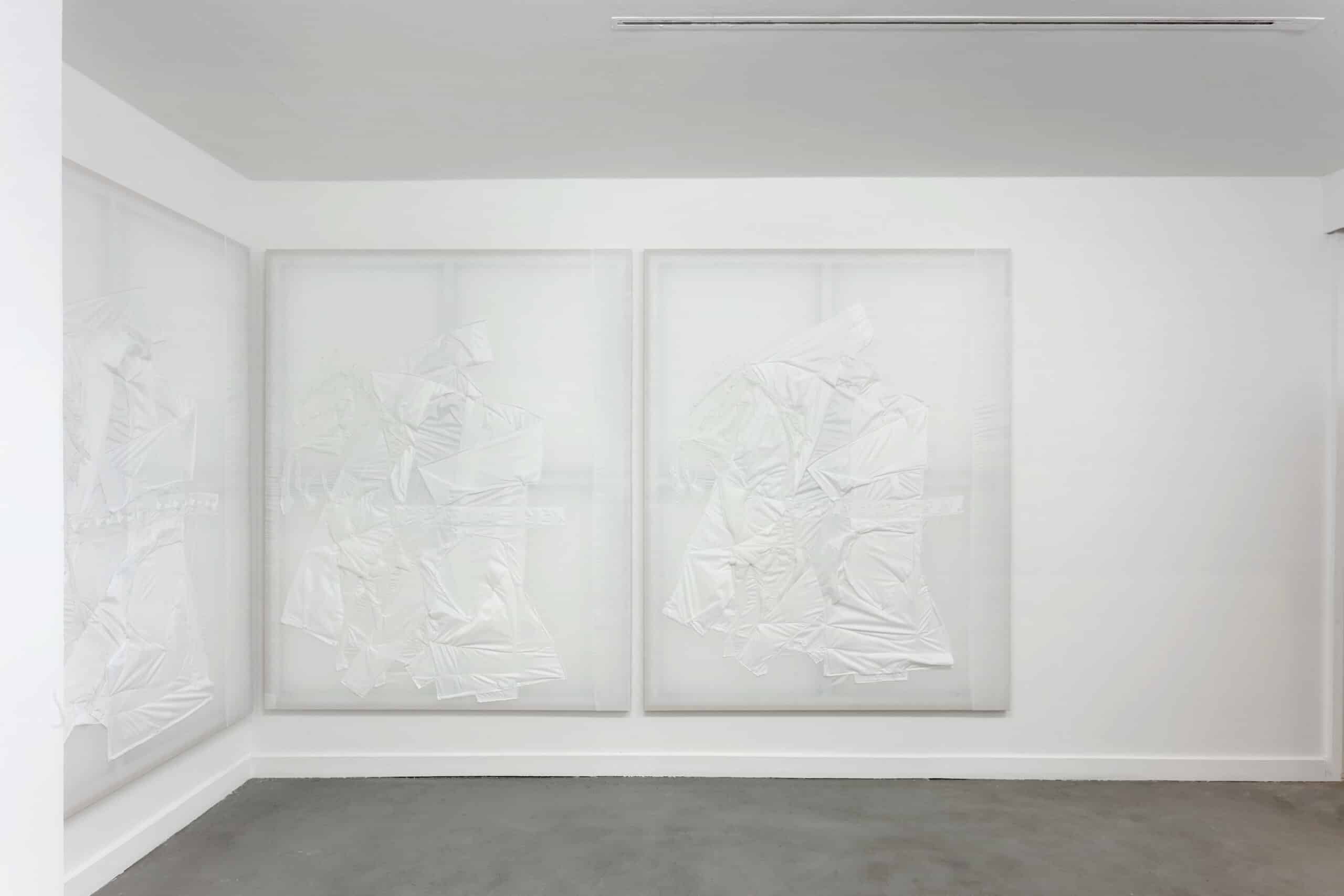 Confection Painting, exhibition view Annet Gelink Gallery, 2019
Confection Painting, exhibition view Annet Gelink Gallery, 2019© Michiel Claus
In Stripes & Stars (Confection Painting) – pay attention to the reverse words in the title – several of Paijmans’ interests and standpoints come together. At first glance it seems to be a matter of coincidence and, above all, a good eye. When you work in series, there is more space for larger and smaller differences. Repetition can reveal a lot, but it can also hide much from view. At a certain point, you have looked at the same thing eighteen times already and abnormalities are no longer noticeable. Then you get used to it and have to refocus your gaze.
Although ready-to-wear clothes are produced en masse, Paijmans notes, human hands produce them: two seemingly identical garments often have small, almost invisible differences. With his confection paintings it’s the same. He simply tries to replicate the earlier Stars & Stripes because he liked the work of art so much, and he tries to do so as closely as possible. As he isn’t a professional seamstress, there is even more room for coincidence. In this way, the artist’s hand no longer shows itself in a consciously developed painterly handwriting, but rather in little slip-ups.


